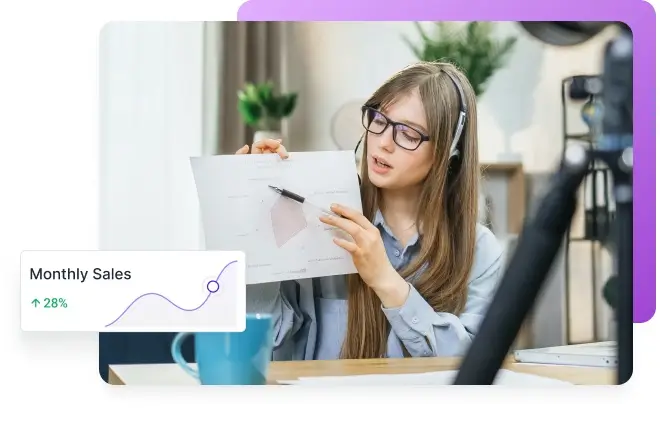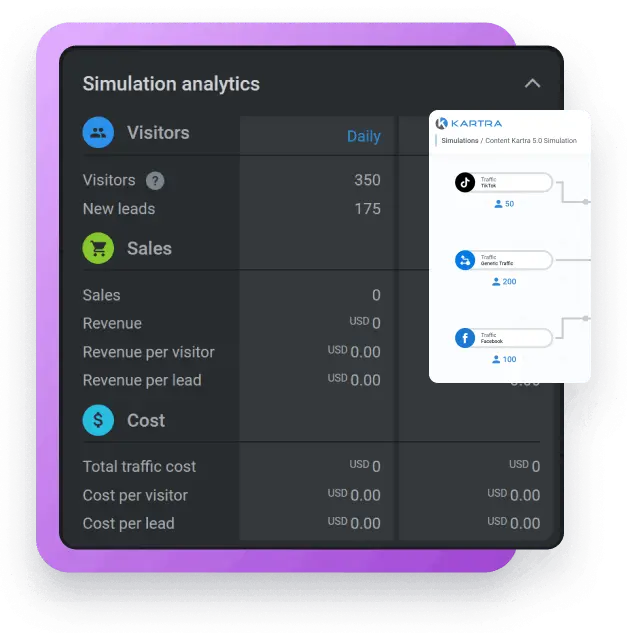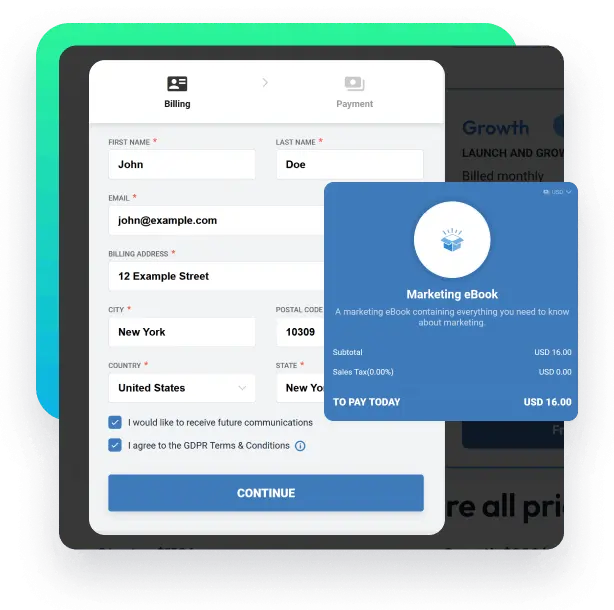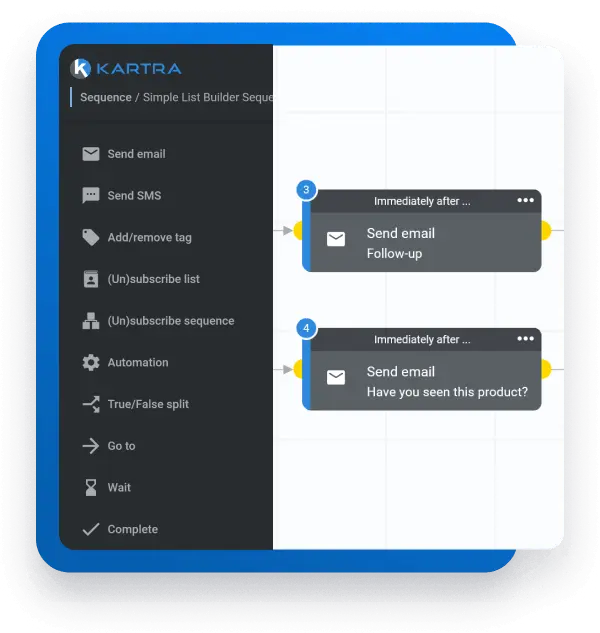- Create
- Market
- Scale
create
market
Designed for coaches, creators, and experts like you.

Streamline your growth by having all of the software tools you need to grow…in one interconnected platform.

Landing page templates
Stunning page templates are designed and ready for you to use.
Done-for-you campaigns
Kartra offers 90+ campaigns that are already written, designed, and connected for you.
Lead capture pages
Grow your subscriber list with high-converting landing page templates that are designed for lead generation.
Opt-in pop ups
Add pop ups that can grow your email list.
Drag-and-drop editor
Easily customize our templates with your branding.
Sales pages
Make more sales with customized branding, products, countdown timers, analytics.

Email marketing automation
Put your emails on autopilot and watch the sales roll in.
Tagging and segmentation
Tag your leads based on the content they engage with, so you can send more of what they like.
IFs and THENs marketing automation
Create sequences that respond to your lead’s actions. Send relevant content.
A/B testing functionality
Split-test any of your marketing assets to increase your ROI.
SMS Marketing
Send SMS marketing messages straight to people’s phones & boost sales.

Sell unlimited products
There’s no limit to what you can create.
Multiple price points
Set up one-time payments, recurring subscriptions, coupon codes, and more!
One-click transactions
Make it easy to earn more with upsells, cross-sells and order bumps.
Tag your buyers
Create future upsell promotions for customers, or build lookalike audiences.
Upsells, down sells and order bumps
Increase the value of each customer by inviting them to buy more

Marketing automations
Make something once and earn on repeat with Kartra’s automations.
Funnel mapper
Visually map out your marketing funnel on a drag-and-drop whiteboard. Then, build your funnel in one place.
Funnel simulator
Simulate your funnel to learn how much traffic you will need to get the best ROI.
Real-time analytics
Track performance across all domains, social accounts, and marketing platforms in one easy-to-interpret visual map.
Everything you need to build modern UI and great products.
Our user-friendly sales funnel tool is synced with other digital marketing tools, making your
success seamless.
Kartra lets me build products, pages, and offers quickly. I’ve earned $24,000 since joining four months ago. It’s been a game changer!

Kartra helps me reach small businesses and make a difference. I own 3 BNI Chapters and my members passed $10 million in referrals last year!

I sent 204,000 emails with Kartra last month. Their deliverability is excellent and their all-in-one system is unmatched in the industry.
